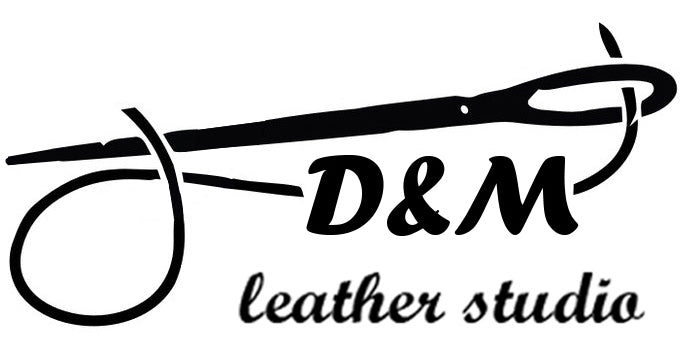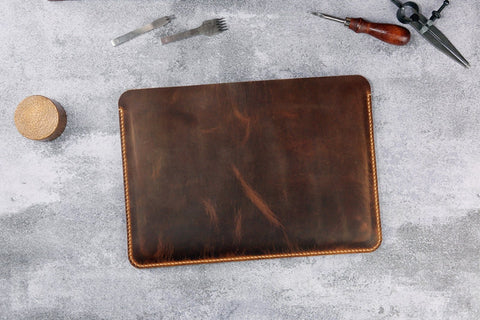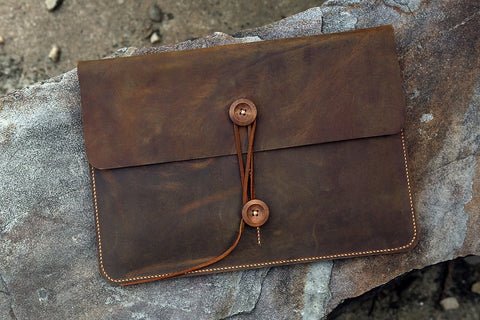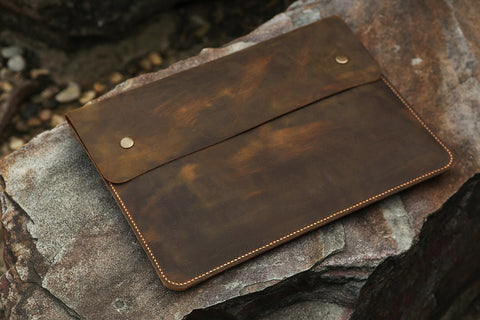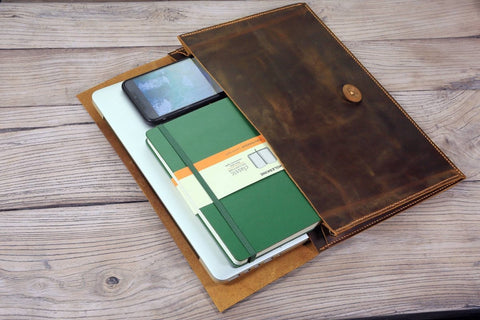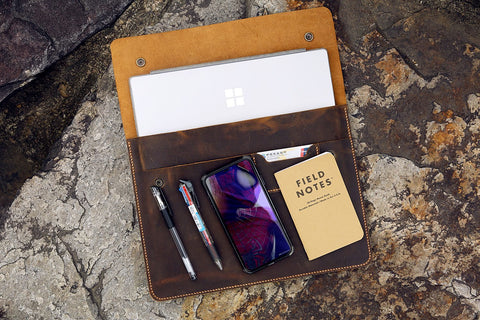Can leather be painted & How to prepare leather for painting?
Introduction
Painting on leather is a rare and elegant hobby. It not only shows your unique taste, but also demonstrates your special painting skills. In addition, the works painted on leather can definitely stand the test of time better than paper and have more preservation value. It is also a very good choice as a gift for relatives and friends!
💡Can leather be painted ?
The answer of course Yes, which is a great way to add color, designs, and unique finishes to your handmade leather goods. you can utilize acrylic leather paints because they are flexible and durable, ensuring they won't crack or peel when the leather is flexed.
By incorporating painted designs into your leather goods, you can offer customized, vibrant, and unique products that stand out, reflecting your craftsmanship and creativity.
How to prepare leather for painting?
- Preparing leather for painting is crucial to ensure the paint adheres properly and lasts. As a craftsman of handmade leather goods, here’s a concise guide:
1. Cleaning: Start by cleaning the leather surface with a leather cleaner or rubbing alcohol. This removes dirt, oils, and any existing finishes that could prevent the paint from adhering properly. Ensure the leather is completely dry before moving on to the next step.
2. Sanding: If the leather has a glossy or smooth finish, lightly sand it with fine-grit sandpaper (320-400 grit). This creates a slightly rough texture that helps the paint adhere better. Be gentle to avoid damaging the leather.
3. De-glazing: Use a deglazer or acetone to remove any remaining finish on the leather. Apply it with a cloth and wipe the leather thoroughly. This step is essential as it ensures the paint will bond directly to the leather, not to the existing finish.
4. Priming (Optional): Apply a leather primer or base coat to the prepared surface. This can provide a uniform base for the paint, ensuring better adhesion and a more even finish. Allow the primer to dry completely before painting.
By following these preparation steps, you create an ideal surface for painting, ensuring the paint adheres well and your leather goods have a professional and durable finish.

😍Tips:To start, apply the paint in thin, even layers using a brush, sponge, or airbrush. Allow each layer to dry completely before applying the next. This method helps build up the color gradually and prevents cracking. You can mix colors to create custom shades or use stencils for intricate designs.
Once your painting is complete and fully dry, apply a leather finish or sealant. This step is crucial as it protects the paint from wear and tear, enhances durability, and adds a final layer of protection against the elements. Allow the painted leather to cure for 24-48 hours before using it to ensure the paint sets properly.
Which leathers can be painted?
As a craftsman of handmade leather goods, you should know that not all leathers are suitable for painting. Here's a guide on which types of leather can be painted:
1. Vegetable-Tanned Leather: This type of leather is ideal for painting because it has a natural surface that readily accepts dyes and paints. It's also more durable and ages well, developing a rich patina over time.
2. Chrome-Tanned Leather: While not as absorbent as vegetable-tanned leather, chrome-tanned leather can still be painted effectively, especially if it’s unfinished or has a minimal coating. Proper preparation is key to ensuring good paint adhesion.
3. Full-Grain Leather: This high-quality leather retains the natural grain and is suitable for painting. Its durability and texture make it an excellent canvas for detailed designs.
4. Top-Grain Leather: Slightly processed to remove imperfections, top-grain leather can be painted, though it may require more thorough preparation to ensure the paint adheres well.
5.Unfinished Leather: Leather that hasn't been treated with any finishes or coatings is highly suitable for painting. It absorbs the paint well and allows for vibrant and lasting colors.
Avoid painting heavily finished, patent, or synthetic leathers, as these surfaces do not accept paint well and may cause peeling or cracking over time. Proper preparation and the right type of paint, such as acrylic leather paint, are essential for achieving the best results on these leathers.
By following these preparation steps, you create an ideal surface for painting, ensuring the paint adheres well and your leather goods have a professional and durable finish.

Which pigments can be used on leather?
As a leather lover, selecting the right pigments for painting leather is crucial for achieving durable and vibrant results. Here are the most commonly used pigments for leather:
1. Acrylic Leather Paints: These are specifically formulated for use on leather. They are flexible, durable, and adhere well to the leather surface. Acrylic leather paints come in a wide range of colors and finishes, including metallic and pearlescent options.
2. Alcohol-Based Dyes: These dyes penetrate the leather deeply, providing rich and long-lasting colors. They are excellent for achieving even coverage and are available in various colors. However, they can be more challenging to work with than acrylics.
3. Oil-Based Paints: Although less commonly used, oil-based paints can be effective on leather, providing a durable and vibrant finish. They take longer to dry and require proper sealing to prevent smudging and wear.
4. Pigment Inks: These inks are often used for stamping and printing on leather. They provide good coverage and can be used to create detailed designs. Pigment inks are available in various colors and can be sealed to enhance durability.
5. Leather Paint Markers: These are ideal for adding fine details and precise lines to leather projects. They contain acrylic paint and are easy to use, offering good control and vibrant colors.
When using any of these pigments, it’s essential to seal the painted leather with a suitable finish to protect the paint and ensure longevity. This final step helps to prevent cracking, fading, and wear over time.

Personalized hand-painted leather goods are the first choice for gifts
Advantages
1. Uniqueness: Hand-painted leather items are one-of-a-kind. Each piece is unique, reflecting the craftsmanship and creativity of the artisan. This uniqueness makes the gift special and personal.
2.Customization: Personalized leather goods can be tailored to the recipient’s tastes and preferences. Whether it’s a name, initials, a favorite design, or a meaningful symbol, customization adds a personal touch that shows thoughtfulness and effort.
3. Durability: High-quality leather is known for its durability and longevity. A well-crafted leather item can last for many years, making it a lasting reminder of the special occasion or relationship.
Benefits
4. Aesthetic Appeal: Hand-painted designs can enhance the natural beauty of leather, adding vibrant colors and intricate patterns. This artistic touch elevates the item from a simple accessory to a piece of art.
5. Versatility: Leather goods come in various forms, such as wallets, bags, belts, journals, and keychains. This versatility means you can find a suitable leather gift for anyone, regardless of age or gender.
6. Practicality: Beyond their aesthetic value, leather items are practical and functional. They are often used daily, ensuring the recipient is reminded of the giver regularly.
Some hand-painted leather goods recommendations from D&M Leather Studio
Here we solemnly recommend to you a few of our most popular hand-painted works, condensed the efforts of our designers.
1 comment
-
Posted on by Cherie DouglasThank you for a very informative article
